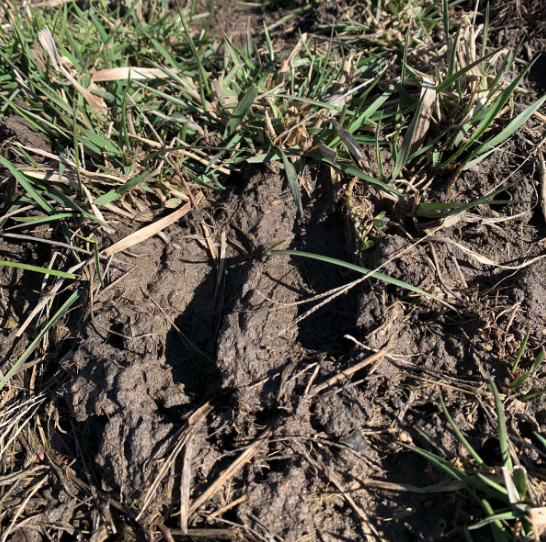
When it comes to spring grazing, the saying, “April showers bring May flowers,” could very well be restated to be, “April showers bring soil compaction, unless care is taken.”
We love to see those rolling green hills for our herds, and with a bit of pre-planning, we can ensure those pastures stay healthy for years to come. But first, let’s talk about the reason for avoiding soil compaction.
Basically, healthy soil = healthy pasture. Healthy soil is not just about having the right amounts of N, P and K. It also includes a strong ecosystem of earthworms, bacteria and other microbes to help break down organic material and recycle nutrients. If your soil has compaction issues, there aren’t enough porous spaces for those organisms to live, nor is there space for water, air and nutrients to flow through.
Soil compaction happens from repeated traffic, either from equipment or animals. It usually occurs when soil is wet or saturated, however, it can also occur on dry soils. In pastures, compaction will most often affect the top 3-4 inches of soil. This compaction will then impact the depth of your pasture’s root system. If the soil is compressed, the roots can’t grow deep—and that’s where the nutrients to feed the plant, and ultimately, your herd, are found.
Soil compaction also diminishes your pasture’s ability to survive drought conditions because of its short root system. That short root system also gives growing room for weeds to overtake your pasture. Additionally, compaction can cause water to pond at the surface and cause erosion during rainfall events.
Identifying Compacted Soil
To determine if your grazing ground has become compacted, you’ll just need to take a thorough look at your pasture. If the roots of your plants are only a few inches deep, you more than likely have a problem.
There are aeration options to try and recreate a porous quality, or, in extreme cases, an overall retillage. However, the best way to deal with soil compaction is to keep it from ever happening and implement a strong grazing management system.
The goal of avoiding soil compaction is to build strong and robust root systems in your forage grasses. Your pasture’s root health is directly related to the amount of time between grazing and/or cutting your pasture.
Grazing Management for Avoiding Soil Compaction
When grass is grazed, the plant’s energy is taken out of its root system in order to regrow its foliage above ground. If a pasture is over-grazed, it becomes stressed and will ultimately have a shorter root system that can’t work down deep into the soil to provide space for a healthy ecosystem. By allowing a pasture to rest between grazing, you give plants time to regrow above ground and maintain a healthy root system.
It’s also imperative to reduce livestock and equipment movement to help prevent your soil from becoming compacted. This is especially true when it comes to the moisture levels of your ground.
If possible, create a grazing rotation that allows for your herd to be on higher ground during any overly wet events to also help prevent any damage. Avoid grazing in areas that are prone to excess water sitting during rainfall.
While a strong grazing management plan takes a bit of extra coordination and forethought, it ultimately will give you a strong, healthy herd thriving on flourishing pastures.
